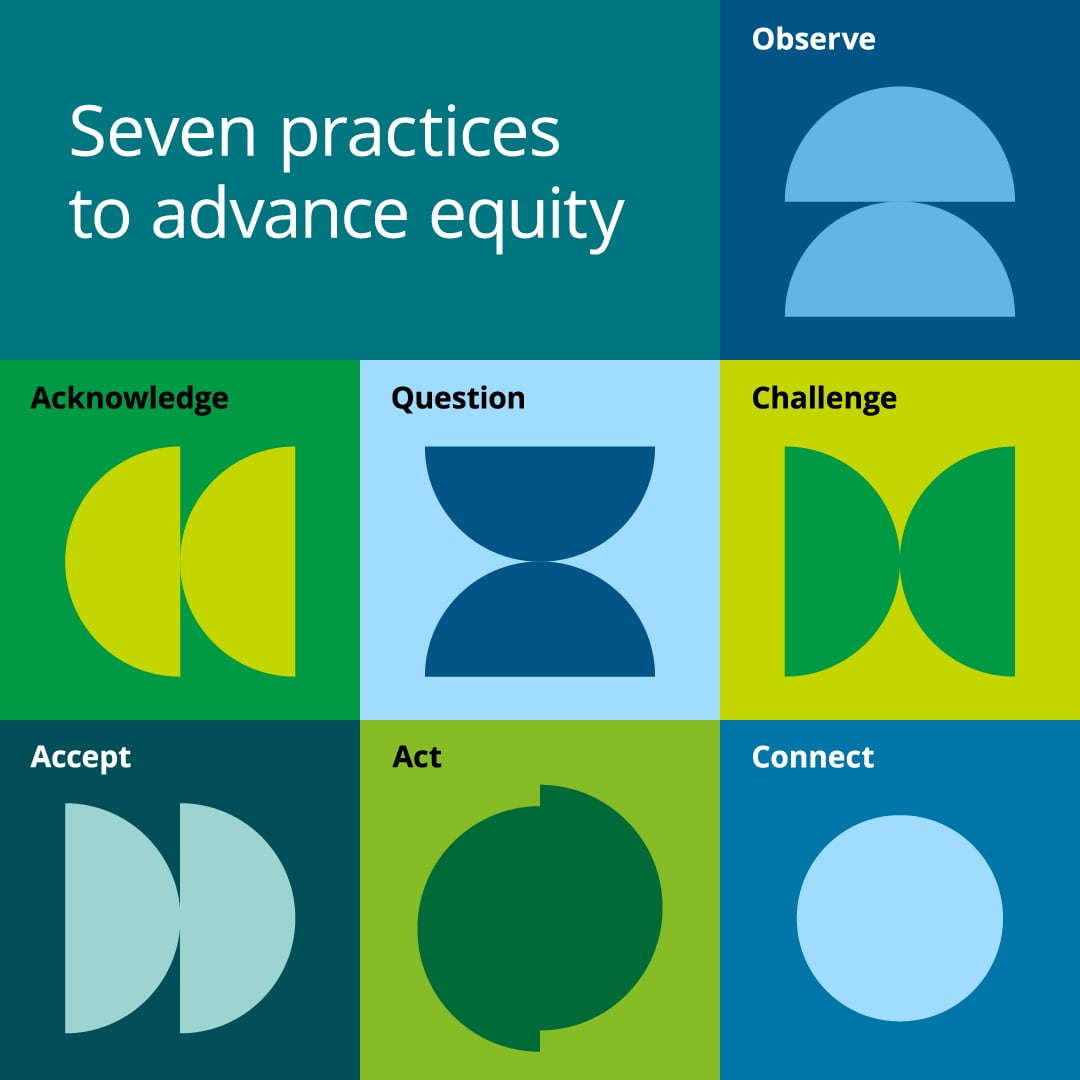The power of “I” in equity
A guide on how we as individuals can practice advancing equity
View: The power of “I” in equity report


The power of the “I” refers to the power all individuals have—from C-suite executives and middle managers to frontline workers—to advance equity in the workplace.
Deloitte’s DEI Institute™ has identified practices to develop a holistic approach to awareness and action, across all encounters, whether professional or personal. They serve as a helpful guide to use and revisit when seeking to understand how to advance equity.
Key findings
Deloitte’s DEI Institute™ surveyed full- and part-time adult (18+) workers from companies with a minimum of 500 employees in the United States, across five industry categories.
More than 73% of respondents agree or strongly agree on the business priority, the
benefit, and that
“everyone” should play a role in advancing equity.
Yet only about
59%
agree or strongly agree that they have a personal responsibility
to
advance equity for
all.
Responses
The report
offers suggestions on how to
engage in each practice and provide
self-reflective questions to prompt ongoing curiosity and growth. The goal is to make a
practice of this work, leading to an overall mindset shift that will guide the habits
individuals develop, the choices they make, and the impact they have on those around
them.
Joanne Stephane
Executive Director, Deloitte’s DEI Institute
Seven practices
Observe | Take notice — Identify patterns in outcomes
Take time to notice how things work for individuals with different identities, experiences, and perspectives. Through this new lens, strengthen this awareness by listening to others with experiences different from your own, demonstrating empathy, and asking questions to build an understanding of all the seemingly innocuous things that can contribute to equity in the workplace.
Acknowledge | Make it plain to yourself — Reflect on your own journey
As you are noticing what is happening around you, be vulnerable and honest with yourself about all the support and resources that were, or were not, available to you. We understand hard work and fortuitous connections influence results. But we should also consider how differing circumstances can lead to very different outcomes, and how systemic advantages or disadvantages may prescribe outcomes for individuals.
Question | Find your why — Follow your curiosity
Stay curious. Make a deeper and personal connection with why challenging the status quo at this moment is important to you. Begin by understanding that equitable outcomes for yourself are often connected to equitable outcomes for others.
Challenge | Shift your perspectives — Reassess your beliefs
It can often be difficult to change our minds, especially when we have been taught to view the world in particular ways. Our beliefs shape our experiences and behavior. If you are willing to sit in your discomfort long enough to challenge your beliefs, you may find other underlying values at odds with your goals and intentions.
Accept | Own your role — Embrace your responsibility
Identifying your responsibility in the pursuit of equity means taking ownership and accountability for what is within your spheres of influence. Be intentional in the actions you take, and clarify how those actions can address root causes that result in equitable outcomes.
Act | Take small steps to bold actions — Build sustainable momentum
To make meaningful change, start with what and whom you know. As you allow different perspectives and experiences to inform your actions, be intentional in how you address root causes of inequity. Focus on the long-term impact and remind yourself that today’s action can be one of many building blocks for realizing transformational and sustainable change.
Connect | Champion together — Commit to collective success
There are likely other individuals who have similar ideas. Recognize and engage with those who have been involved in and committed to change. Connect and join with people of different identities, perspectives, strengths, and talents to envision, strategize, and execute bold actions.
Conclusion
Meaningful progress takes bold actions to address systemic issues and root causes. It
requires individuals who
are willing to examine their own assumptions, understand how systems reinforce the
status
quo, align their
purpose and commitment with what is required, and have the courage to address systemic
inequities — built into
processes, policies, and everyday decisions. It requires harnessing the power of the
individual to move from asking
“Who is responsible for prioritizing equity?” to “How can I contribute
to
advancing
equity?”
When we take bold action collectively, we can build an equitable future.
View: The power of “I” in
equity
report